Are you ready to take your business to the next level with sales funnels?
If so, you’re probably deciding between two of the hottest software solutions on the market right now:
ClickFunnels and Kajabi.
ClickFunnels advertise themselves as “Marketing Made Easy,” and they definitely deliver on this promise.
You can use the tool to do all sorts of cool stuff — from building entire websites to generating leads and selling high-ticket consulting packages.
Clickfunnels harnesses the awesome power of sales funnels to help you sell more products and services:
Sales funnels automate the various steps in your purchasing process, so customers can learn about your product, make a purchase, and be up-sold on relevant items seamlessly (you can learn more on sales funnels in this epic piece from Uplead).
Some of the most popular online training courses (such as the Sam Ovens Consulting program) recommend Clickfunnels as the landing page tool of choice.
The software is also a favourite among affiliate marketers promoting top affiliate programs and e-commerce business owners running paid promotions on products.
Kajabi is similar to ClickFunnels, and call themselves “The Only Knowledge Platform Today.”
With Kajabi, businesses can also automate their sales funnels, webinars, membership sites, and more.
So, which one is right for you?
We dove deep into each platform to discover the differences and found that Clickfunnels out classes Kajabi in a number of ways.
Let’s have a look at why Clickfunnels is superior to Kajabi as a software tool…
1. ClickFunnels Cost Less
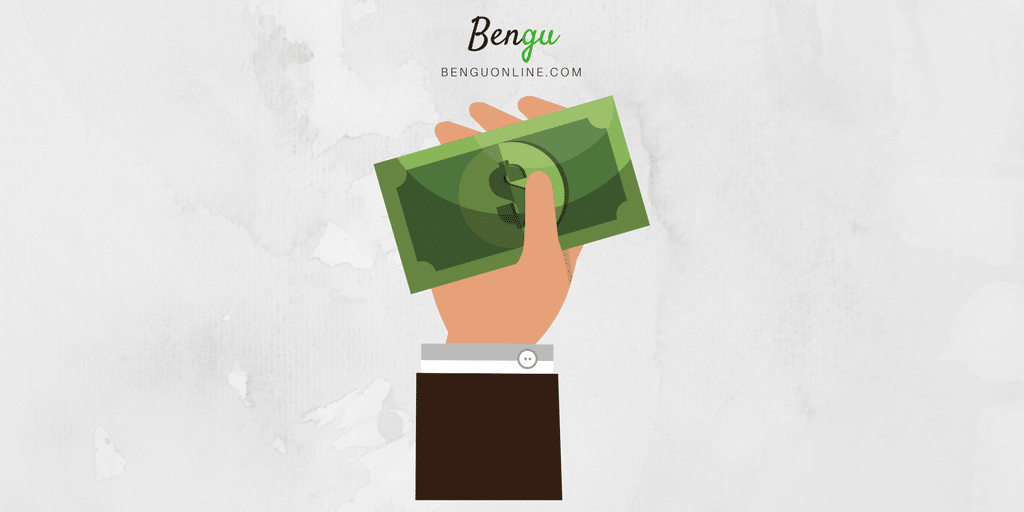
Budget is the one thing on every business owner’s mind, so pricing is the first comparison we had to make.
From the start, it’s clear that ClickFunnels is just plain cheaper. The basic plan with ClickFunnels will cost you $97 a month. The “Etison Suite” package is priced at $297 a month:



Kajabi, on the other hand, offers their lowest tier plan for $129 per month.
Like most subscriptions, you can bring that number down by paying annually, but that’s quite the commitment for a new entrepreneur. The “pro” plan will set you back $389 a month:
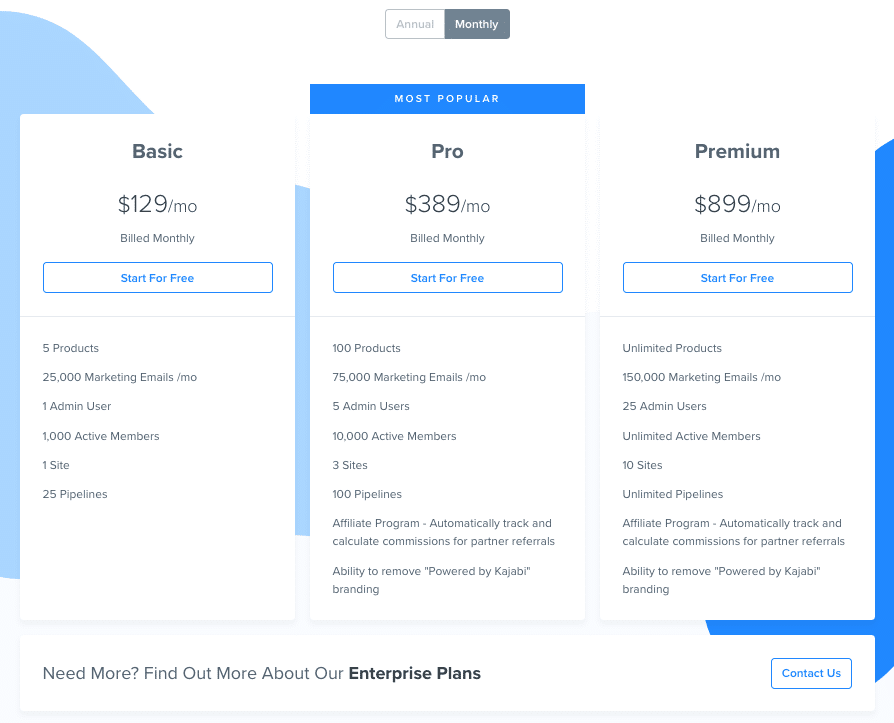
Over the course of a year (on the basic plan), choosing ClickFunnels over Kajabi will save you $384. That’s a big chunk of change that could be used in plenty of other ways to help you grow your business.
When it comes to pricing, the cheaper option from ClickFunnels means that the company definitely comes out ahead in this department.
But does that mean they’ve skimped on features?
Well, not quite…
2. ClickFunnels Offers More Domains per Package

So, you have one business, but three very different products. Sometimes, selling them all on one website just doesn’t make sense. Customers get confused, and your sales pipeline can get confusing.
No matter which plan you choose from ClickFunnels, you won’t face this problem.
Even the basic plan allows every business to create and host three completely separate domains within their account.
This helps you stay organized, keep your products separate, and ultimately make more sales!
Unfortunately, with Kajabi we can’t say the same. Even though their basic plan is pricier than ClickFunnels, it still comes with less domain features.
When you start out with Kajabi, you will only have the option to build and run a single domain unless you decide to upgrade.
Related: Looking to launch a site but don’t know where to start? Check out this piece on how to start a blog from scratch.
3. ClickFunnels is Better for Membership-Based Businesses
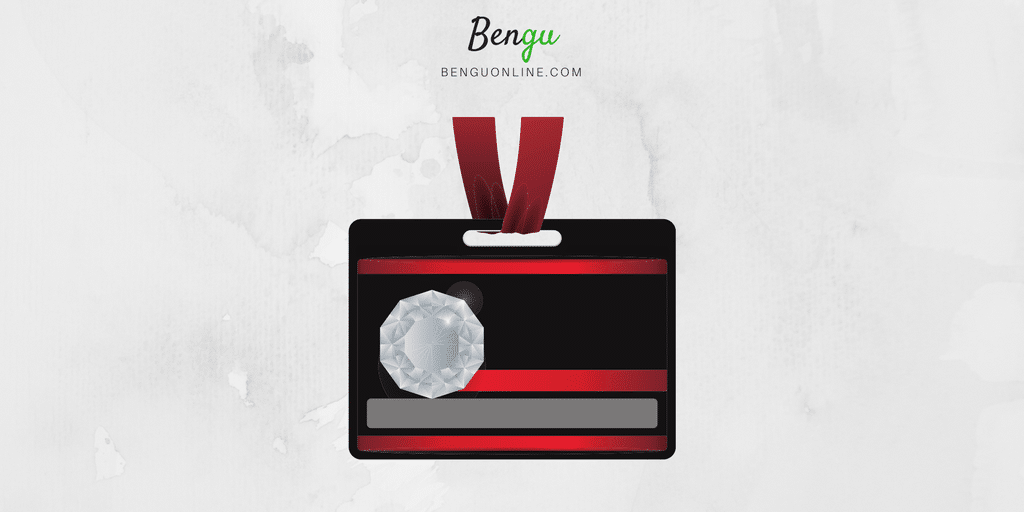
This is where the two companies really start to diverge.
If you run a membership-based business, then ClickFunnels clearly stands out as the superior option.
Even the basic plan allows an unlimited number of members to sign-up and join your program.
The Kajabi basic plan only allows 1,000 active members, and the next level up still limits businesses to only 10,000.
If you want to get the same unlimited amount that ClickFunnels offers for $97 per month, you’ll be stuck paying $899 instead with Kajabi!
Let’s break that down:
Unlimited membership signups from ClickFunnels is possible for only $1,164 per year. With Kajabi, that number jumps up to over $10,000!
4. ClickFunnels is Easy to Use

Right now, getting started with sales funnels may seem a little intimidating. Learning the ropes for any new piece of software can be daunting.
But Clickfunnels do everything they can to keep overwhelm to an absolute minimum.
How?
By offering a super cool “board game” onboarding process where they take you through various aspects of the tool and reward you with little gifts like stickers and t-shirts!
It’s a super fun way to master the fundamentals of a new piece of software and I’ve not seen this being done anywhere else.
Moreover, ClickFunnels makes using all of its features extremely easy. You can try “ClickPops” to put email opt-in boxes on your website, or “ClickOptin”, which allows subscribers to opt-in to new email sequences with only one click in your emails.
ClickFunnels also makes A/B testing your landing pages simple and straight-forward, so getting the best converting sales funnel for your business is now easier than ever.
5. Clickfunnels Has a Superior Checkout Landing Page
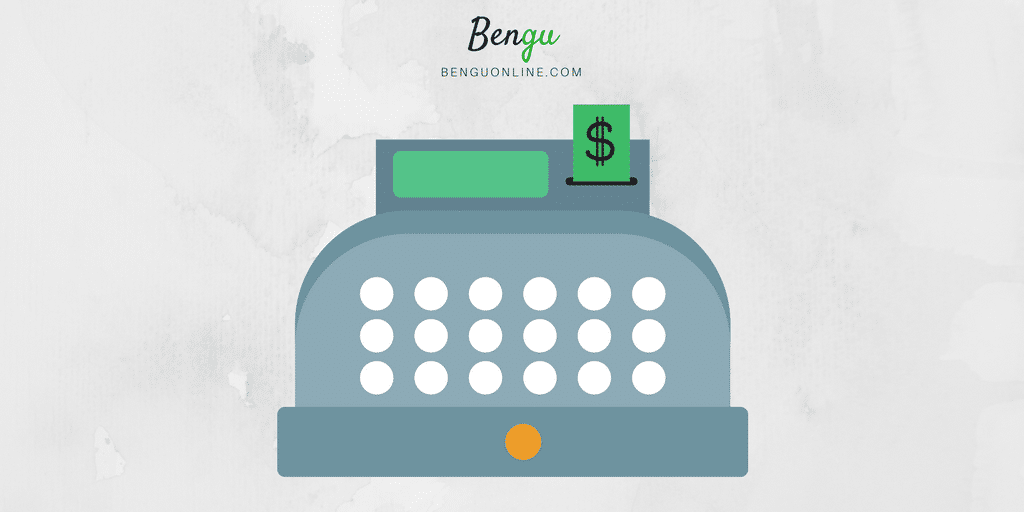
Your checkout page is one of the most important parts of your sales process.
No matter how much customers may love what you’re selling, if you can’t get them to click that “buy” button, nothing else matters. Because of this, we took a long, hard look at the checkout pages offered by both ClickFunnels and Kajabi.
Guess who comes out on top?
That’s right! Clickfunnels!
ClickFunnels has a one-step checkout page. That means, all customers have to do is type in their card information and the money will exchange hands.
The Kajabi checkout process just isn’t as simple or easy, which can result in lower conversion rates.
It may seem like only one small step, but it can make a huge difference.
The simplified checkout system from ClickFunnels can lead to less cart abandonment and a healthy increase in revenue.
6. Experts Trust ClickFunnels

ClickFunnels is built for awesome people, by awesome people.
It was created by Russell Brunson — an entrepreneur that helps companies grow their profits through optimising their sales and marketing.
Russell grew the company from nothing to over $30 million in revenue in just two years! And he achieved this without any outside funding.
Since it launched, it has taken the software tool market by storm and is now used by many well-known business owners from the likes of Lewis Howe to Vince Reed and Dean Graziosi.
Clickfunnels have even set-up a special hall of fame, celebrating people that have reached total financial freedom (7 figures) through their funnels.
It’s called “The 2 Comma Club” and you can check it out here.
Over 117 people have made 7 figures in revenue through Clickfunnels.
Isn’t that awesome?!
After performing a little research, it becomes clear that Clickfunnels is unlike most other products on the market. It’s one of the most robust software tools you can use in your business.
And it really comes down to this:
If you’re selling a product or service, you can use Clickfunnels to help you achieve your goals.
Why We Chose ClickFunnels Over Kajabi
When they go head to head, ClickFunnels beats out Kajabi for a number of reasons.
Clickfunnels is more cost-effective, includes more features as standard and is better optimised for making sales.
If you’re still on the fence though, we have some good news:
ClickFunnels and Kajabi announced that the two platforms can now be easily integrated with each other.
If you are a Kajabi user that’s been interested in checking out ClickFunnels, but too intimidated to move all of your content to a new platform, this integration could be a perfect solution.
Whether you’re a brand new entrepreneur ready to build your dream or an experienced business owner looking for a better way to sell your products/services — Clickfunnels will help you get there.
If you’re looking for a more detailed look at Clickfunnels, check out this comprehensive comparison guide between Clickfunnels and Leadpages.

This article was written by Dianne Minardi. Dianne is a freelance writer, digital marketer, and avid traveller. Keep up with her latest adventures, explore the ups and downs of full-time life on the road, and learn how to find work abroad on her blog at Slight North!

I’m a London-born lover of technology, obsessed with online business, passive income and the digital economy. I love learning, researching and curating the most valuable resources to save you time, money and help you discover the truth on what it actually takes to achieve your goals.
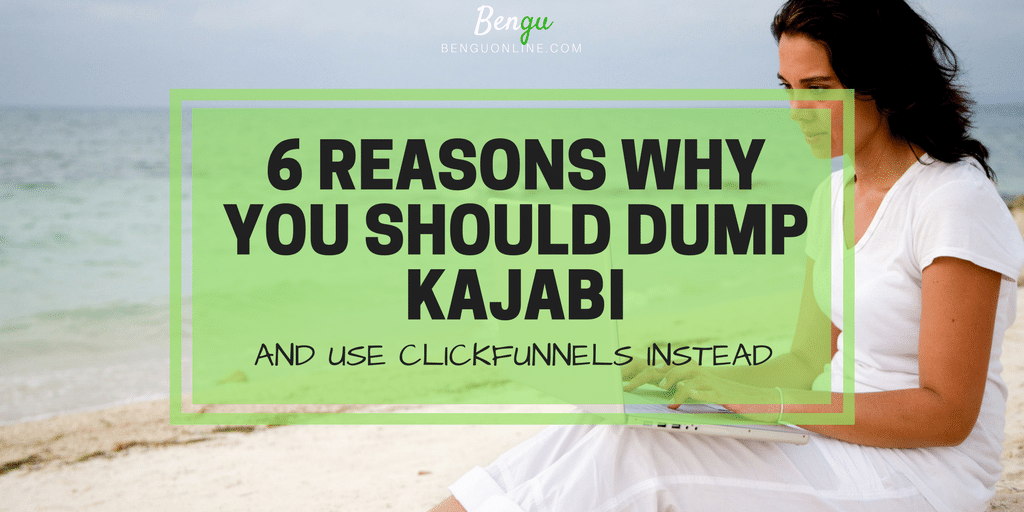
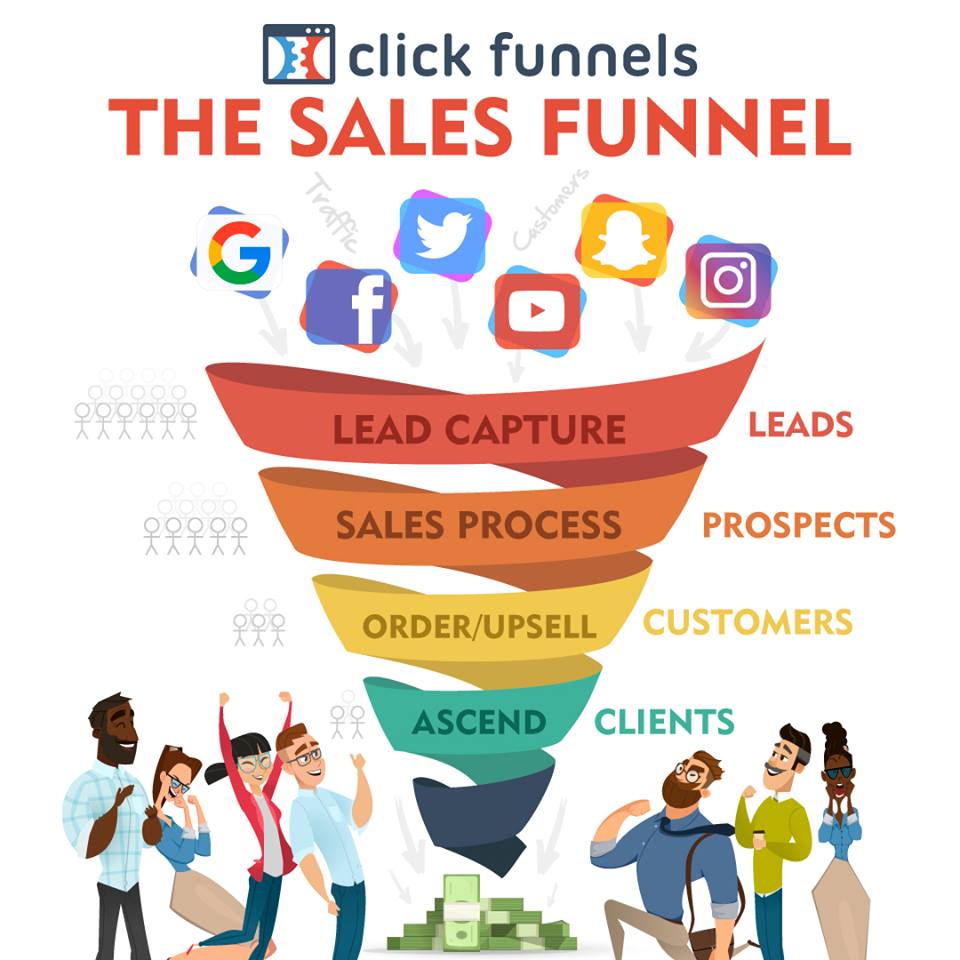
Sorry to be blunt, but I think your article misses the point: you are comparing both from a marketing and selling point of view – and Clickfunnels are good for that! That’s what they sell: funnels! I think Kajabi and Clickfunnels cannot actually be compared. Why? because Kajabi sells solutions to deliver your knowledge-based products, and incidentally market them. Their main thing is hosting content. Clickfunnels doesn’t enable you to deliver anything, you cannot host memberships, courses etc. Unless all you do is selling an ebook delivery per email, or 1-1 services where you have no need for an interface,… Read more »